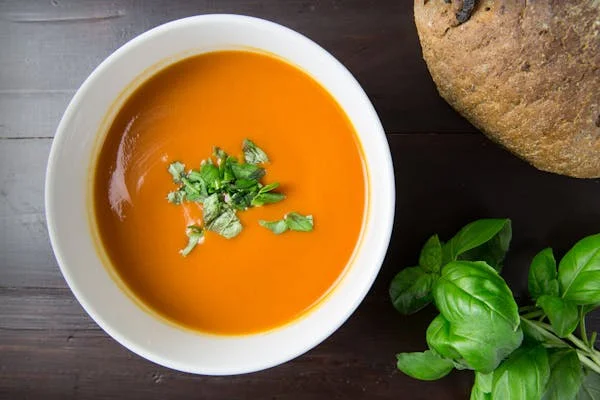Introduction
Tamisie is a fine mesh sieve or strainer used primarily in cooking for its ability to purée, strain, and infuse flavors with precision. Its delicate mesh allows the filtration of solids from liquids, ensuring smooth textures in culinary creations. This kitchen tool, often overlooked by home cooks, plays an integral role in professional kitchens, helping create refined sauces, soups, and other dishes.
The History of Tamisie
The origins of the Tamisie can be traced back to ancient culinary traditions, with early versions of fine mesh sieves used in regions across Asia, Europe, and the Middle East. As civilizations advanced, so did the tools they used for food preparation. The Tamisie has evolved into a versatile kitchen staple known for its precision in texture refinement. It was once a luxury item in royal kitchens but has now become accessible to the home cook.
In modern times, it is prized for its ability to enhance the presentation and flavor profiles of complex dishes, making it a go-to tool for chefs worldwide.
Key Benefits of Using Tamisie in Cooking
1. Refines Texture
One of the most notable advantages of Tamisie is its ability to create perfectly smooth textures in dishes. It’s particularly useful for puréeing vegetables, fruits, or even stocks, ensuring that any unwanted fibers or solids are removed, leaving behind silky smooth liquids.
2. Flavor Infusion
Tamisie is excellent for infusing oils, syrups, and vinegars with herbs, spices, or other aromatic ingredients. The fine mesh captures even the smallest particles, allowing flavors to infuse thoroughly into liquids without introducing bitterness or graininess.
3. Efficient Straining
When making soups, sauces, or juices, it provides a fine, efficient straining process. The tight mesh ensures that only the cleanest liquids pass through, while solids such as seeds, skins, and fibers are left behind.
Tamisie vs. Other Strainers: What Sets It Apart?
| Feature | Tamisie | Regular Sieve |
| Mesh Quality | Fine mesh, ideal for puréeing and infusions | Coarse, suitable for basic straining |
| Versatility | Multiple uses for puréeing, straining, and infusing | Primarily used for straining large particles |
| Material | Typically metal or silk, fine construction | Metal, plastic, or nylon |
| Shape | Flat, with wide sides for easy pressing | Usually round with deep edges |
| Ease of Use | Requires steady pressure to extract maximum liquid | Simple operation, no pressing required |
How to Use Tamisie: A Step-by-Step Guide
1. Prepare Your Ingredients
Gather your fruits, vegetables, herbs, or liquids that need straining, puréeing, or infusing. Fresh ingredients will yield the best results.
2. Position the Tamisie
Set the Tamisie over a large bowl or container. It’s important to ensure that it is secure, either by holding it in place or setting it on a stable surface.
3. Press and Strain
With a spoon, spatula, or pestle, gently press the ingredients through the fine mesh. The liquid will pass through, leaving behind any solid particles.
4. Collect the Liquid
The liquid that collects below the sieve is now ready for use in your recipes, be it for a smooth soup, sauce, or syrup.
5. Clean Thoroughly
Immediately rinse the Tamisie after use to prevent food from drying on the mesh. Use a soft brush to clean the fine mesh and ensure it remains in optimal condition.
Common Uses of Tamisie in Cooking
1. Flavor Infusion
Infusing oils, vinegars, or syrups with herbs, spices, or citrus zest is made easy with Tamisie. The fine mesh allows for the infusion of subtle flavors without introducing the actual solid particles into the liquid. Whether you are making a homemade herb-infused olive oil or a spiced syrup for desserts, Tamisie ensures a smooth, aromatic result.
2. Puréeing Fruits and Vegetables
For purées, Tamisie is invaluable. Whether you are making tomato sauce, mashed potatoes, or fruit purées for desserts, the sieve helps break down the ingredients into a smooth, lump-free texture. It’s particularly beneficial for dishes like tomato bisque, where a velvety smooth consistency is key.
3. Straining Stocks and Broths
It plays an essential role in straining stocks and broths. Its fine mesh captures any floating impurities or solid bits, leaving behind a perfectly clear and clean broth. This is particularly important for creating clear consommés or refined sauces.
Using Tamisie for Smooth Sauces and Soups
When preparing sauces like hollandaise or béchamel, a Tamisie can ensure that the sauce remains smooth and free of lumps. Similarly, in soups, especially creamy varieties like bisques, the Tamisie separates any fibrous components such as vegetable skins, ensuring a smooth, refined texture that enhances both the appearance and mouthfeel.
Example: Tomato Sauce
- Prepare your tomatoes by boiling and skinning them.
- Place the Tamisie over a bowl, and press the tomatoes through the mesh.
- The liquid that passes through will be your smooth tomato sauce, free from seeds and skin.
How Tamisie Helps with Homemade Syrups
Homemade syrups are another area where Tamisie excels. Whether you’re making a simple syrup for cocktails or a berry-infused syrup for desserts, the fine mesh ensures that any seeds or pulp are removed. The result is a pure, smooth syrup that enhances the overall flavor profile of your creations.
Example: Berry Syrup
- Prepare fresh berries and place them in a saucepan.
- Heat gently, pressing the berries to release their juice.
- Strain through the Tamisie to remove any seeds or pulp, leaving a smooth syrup.
Advanced Techniques for Using Tamisie
Pressing Firmly for Maximum Yield
When puréeing or straining, pressing the ingredients firmly through the mesh helps you extract as much liquid as possible. This ensures that you maximize the yield from your ingredients while achieving the desired smoothness.
Layering for Enhanced Infusion
For particularly robust flavor infusions, consider layering herbs or spices within the Tamisie. This method allows the liquid to absorb deeper, more concentrated flavors from the herbs, spices, or citrus zest.
The Cultural Significance of Tamisie in Culinary Traditions
The Tamisie is more than just a tool it has cultural significance in many culinary traditions. In French cuisine, fine sieves have long been a part of gourmet cooking, used in the preparation of consommés, sauces, and pâtés. Similarly, in Asian kitchens, sieves like the Tamisie are used for separating rice from water or for straining broths to perfection. The tool is a symbol of craftsmanship in the kitchen, often seen as a mark of culinary refinement.
Tips for Cleaning and Maintaining Tamisie
- Rinse Immediately After Use: Food particles can dry and become difficult to remove. Rinse the Tamisie as soon as you finish using it.
- Use a Soft Brush: Clean the mesh carefully with a soft brush to dislodge any trapped particles.
- Avoid Harsh Chemicals: Clean your Tamisie with warm water and mild dish soap. Avoid abrasive scrubbers or harsh chemicals that could damage the fine mesh.
Tamisie in Professional Kitchens vs. Home Use
In professional kitchens, it is often used for its precision and ability to create fine textures in dishes like consommés, pates, or delicate sauces. Chefs rely on the tool for its consistent results, especially when creating gourmet meals that require the utmost attention to detail.
At home, however, the Tamisie can be just as useful, particularly for home cooks who wish to create smooth, refined dishes. While it may not be an everyday tool in many households, it’s a great addition for those who enjoy experimenting with textures or flavor infusions.
Why Tamisie is an Essential Tool for Every Cook
It offers versatility, precision, and durability, making it an indispensable tool in both professional and home kitchens. Whether you’re puréeing vegetables, straining stocks, or infusing flavors, Tamisie provides a level of refinement that enhances the quality of your dishes. Its fine mesh ensures smooth textures, and its sturdy design promises longevity, making it a valuable kitchen investment.
Conclusion:
It is a powerful tool that enhances the cooking experience by refining textures, infusing flavors, and creating smooth, consistent liquids. Its versatility makes it a must-have for both professional chefs and home cooks alike. By incorporating Tamisie into your culinary practices, you can elevate your dishes and achieve restaurant-quality results from the comfort of your own kitchen.
Whether you are making a silky-smooth soup, an infused syrup, or a refined sauce, Tamisie ensures that the final product is nothing short of perfection. Its historical significance and continued relevance in modern kitchens highlight its timeless utility and appeal.
FAQs About Tamisie
What is Tamisie used for in cooking?
It is a fine mesh strainer or sieve primarily used to purée, strain, and infuse liquids. It is designed to separate solids from liquids, creating smooth textures in soups, sauces, and syrups. It’s especially helpful for making smooth purées or straining fine broths and stocks, as well as infusing oils or vinegars with herbs or spices.
How do you use a Tamisie?
To use a Tamisie, you place it over a bowl or container, then press the ingredients through the mesh using a spoon or spatula. This helps separate the liquid from any solids, creating smooth, refined textures. It’s particularly useful for puréeing fruits or vegetables and straining liquids like stocks or sauces.
Can Tamisie be used for infusing flavors?
Yes, it is excellent for infusing flavors into liquids. By placing herbs, spices, or citrus zest in the sieve and allowing liquids like oils or vinegars to pass through, you can capture the subtle flavors without introducing any solid particles. This method is ideal for creating flavored oils, syrups, or vinegars.
How do you clean a Tamisie?
After using the it, rinse it immediately to prevent food particles from drying on the mesh. Use a soft brush to gently clean the fine mesh, ensuring no debris is trapped. Avoid using abrasive scrubbers or harsh chemicals, as they can damage the delicate mesh.
What is the difference between a Tamisie and a regular sieve?
The main difference is in the mesh quality. It has a finer mesh, ideal for puréeing and straining fine particles, while a regular sieve often has a coarser mesh suitable for straining larger solids. Tamisie is more versatile and is preferred when a smooth texture is required, such as in sauces or soups.
Is Tamisie necessary for home cooks?
While not essential for every cook, it is a valuable tool for those who want to refine their cooking techniques. It’s particularly useful for making smooth soups, sauces, or purées. If you enjoy experimenting with textures or want to enhance the quality of your dishes, adding a Tamisie to your kitchen can be a great investment.






